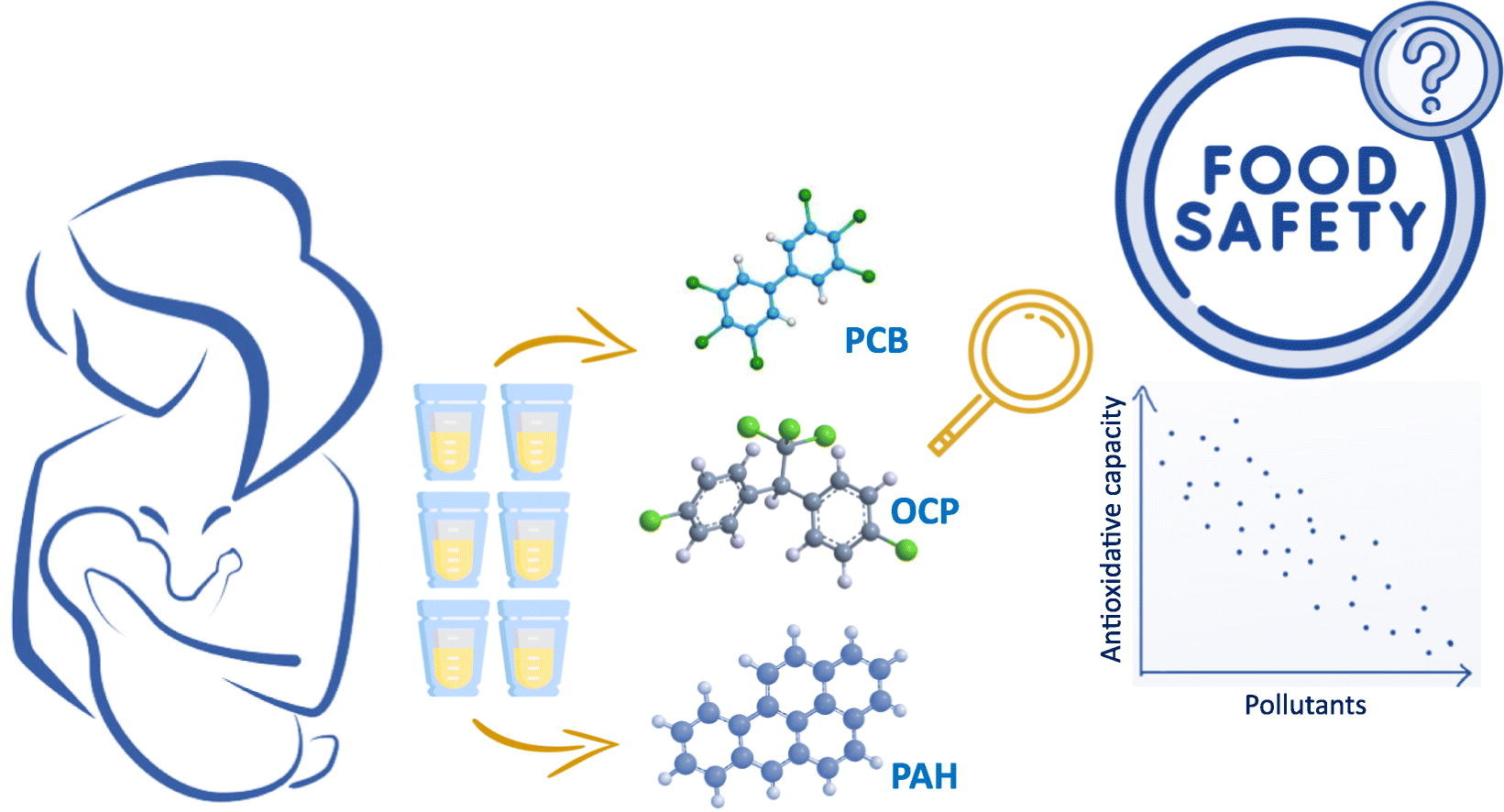Radovi naših znanstvenika (36)
Presence of polycyclic aromatic hydrocarbons and persistent organochlorine pollutants in human Milk: Evaluating their levels, association with Total antioxidant capacity, and risk assessment. Science of The Total Environment (2024) 931; 172911. doi: 10.1016/j.scitotenv.2024.172911
Autori: Gordana Mendaš, Ivana Jakovljević, Snježana Herceg Romanić, Sanja Fingler, Gordana Jovanović, Marijana Matek Sarić, Gordana Pehnec, Aleksandar Popović, Dalibor Stanković
Sažetak
Breastfeeding provides numerous health benefits for both infants and mothers, promoting optimal growth and development while offering protection against various illnesses and diseases. This study investigated the levels of polychlorinated biphenyls (PCB), organochlorine pesticides (OCP) and polycyclic aromatic hydrocarbons (PAH) in human milk sampled in Zadar (Croatia). The primary objectives were twofold: firstly, to evaluate the individual impact of each compound on the total antioxidant capacity (TAC) value, and secondly, to assess associated health risks. Notably, this study presents pioneering and preliminary insights into PAH levels in Croatian human milk, contributing to the limited research on PAH in breast milk worldwide. PCB and OCP levels in Croatian human milk were found to be relatively lower compared to worldwide data. Conversely, PAH levels were comparatively higher, albeit with lower detection frequencies. A negative correlation was established between organic contaminant levels and antioxidative capacity, suggesting a potential link between higher antioxidative potential and lower organic contaminant levels. Diagnostic ratio pointed towards traffic emissions as the primary source of the detected PAH. The presence of PAH suggests potential health risk, underscoring the need for further in-depth investigation.
Grafički sažetak

Poveznica na članak: https://doi.org/10.1016/j.scitotenv.2024.172911
